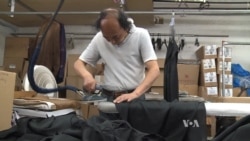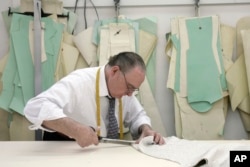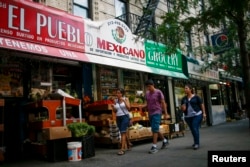If you are a small-business owner in New York City, you are on the horns of a dilemma: You want to take care of valued employees. You need to make a profit. But you may be facing an 80 percent increase in the cost of labor.
Fifty-two percent of the 70,000 small businesses in New York City are owned by immigrants. Under a new law in New York state, all New York City businesses will have to pay a minimum wage of $15 an hour within three years.
One of these business owners is Steve Hung, who was born in China and raised in Vietnam before coming to the United States with his family. Hung owns VCD Trading, which specializes in high-end fashion manufacturing, including items for The Row, a critically acclaimed brand of fashions and accessories designed by TV celebrity twins Ashley and Mary-Kate Olsen.
“Most of my workers [he has 15 employees] average between $11 and $13 per hour, and that’s probably, in this industry, one of the higher ones,” said Hung, “but now ... you’re actually raising the minimum wage from $8.75 to $15 in three years, which is 80 percent. I don’t know how to sustain that.”
Other businesses in the city face the same dilemma, and most of them are also owned by immigrants. Slightly more than half of New York's businesses are immigrant-owned.
Hung believes the average salary at VCD is going to be between $16 and $18 and, he added, “I don’t think this industry — made in the U.S.A. — can support that.”
A study by the Institute for Research on Labor and Employment at the University of California at Berkeley concluded that the $15 minimum wage would “be very positive” — with employer payroll costs across the entire for-profit sector rising by only 3.2 percent on average.
The study said many businesses already pay more than $15 an hour, and many low-wage workers are paid more than $9 an hour. Also, in a recent Quinnipiac poll, 75 percent of New York City residents said they favored the new $15 minimum wage.
Starting a business in N.Y.
The garment industry, once thriving in New York City, has faced stiff competition from China and other Asian countries that pay workers very little, resulting in lower manufacturing costs.
Hung said he thought about starting a factory in China, but there was too much competition, and the transfer of goods was too costly, especially if a client did not pay on time, or at all.
Hung decided to manufacture in New York and built a reputation.
“Everybody saw that I was giving a quality product," he said. "Word of mouth started, people introduced me to other people that needed my quality of work. And, a lot of new customers are looking for garments made in the U.S.A. and a good, quality, reliable factory.”
Susie Liebowitz, director of production for Ten By women’s sportswear, is one of Hung’s customers. Liebowitz said the Chinese want large orders, not boutique-type orders.
“It just ends up being cheaper, faster, easier in New York, because you can communicate directly with the factory, even just walk over if there’s an issue and solve it,” she said.
Liebowitz said she saw a glimmer of hope around manufacturing in New York.
“Made in the U.S.A. is a big selling point, and it’s a really big selling point to international customers, oddly enough," she said. "If you are selling to a Chinese vendor, made in the U.S.A. means something because the Chinese can get stuff made in China anywhere. Made in the U.S.A. increases the value of the product.”
Maintaining a business
The New York-based Fiscal Policy Institute (FPI) says most of New York's immigrant-owned businesses, unlike Hung's, are likely to be Main Street businesses, such as grocery stores, restaurants and barbershops.
David Dyssegaard Kallick, director of FPI’s Immigration Research Initiative, told VOA, “So what we’re talking about are the hair salons, the dry cleaners, the stuff that makes up the kind of character of a neighborhood."
In New York, FPI figures show that almost 50 percent of all Main Street businesses are owned by immigrants.
“Those are not necessarily the biggest employers or the big drivers of the overall economy," he added. "You’re talking about the small neighborhood places; they are what makes an area attractive." And something else: “Immigrant businesses often bring new energy to the urban, suburban and rural landscape of America.”
The odds against small businesses lasting more than five years are high. Kallick praised the immigrants' drive and determination.
“People come here — clearly to some extent, it’s an act of entrepreneurship," he said. "Just to pick up and move from your country, go to a different place, you’re a risk-taker. That person is someone who has ambition to make a different life for oneself.”
According to the U.S. Bureau of Labor Statistics, “about half of all new establishments survive five years or more, and about one-third survive 10 years or more." The bureau says survival rates have changed little over time.
That might bode well for small, immigrant-owned businesses that have stood the test of time, like Hung's, an indication they will find a way to solve the new minimum wage dilemma.










